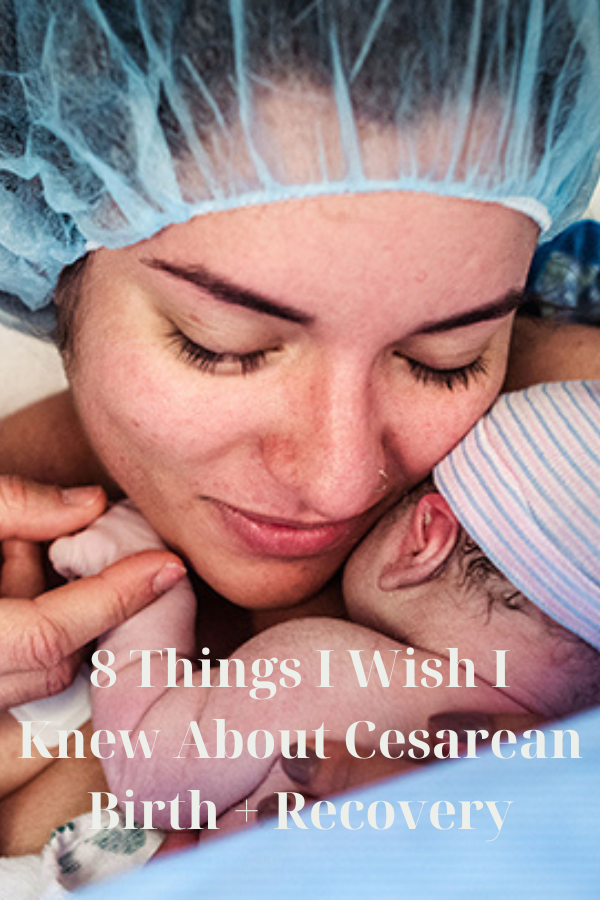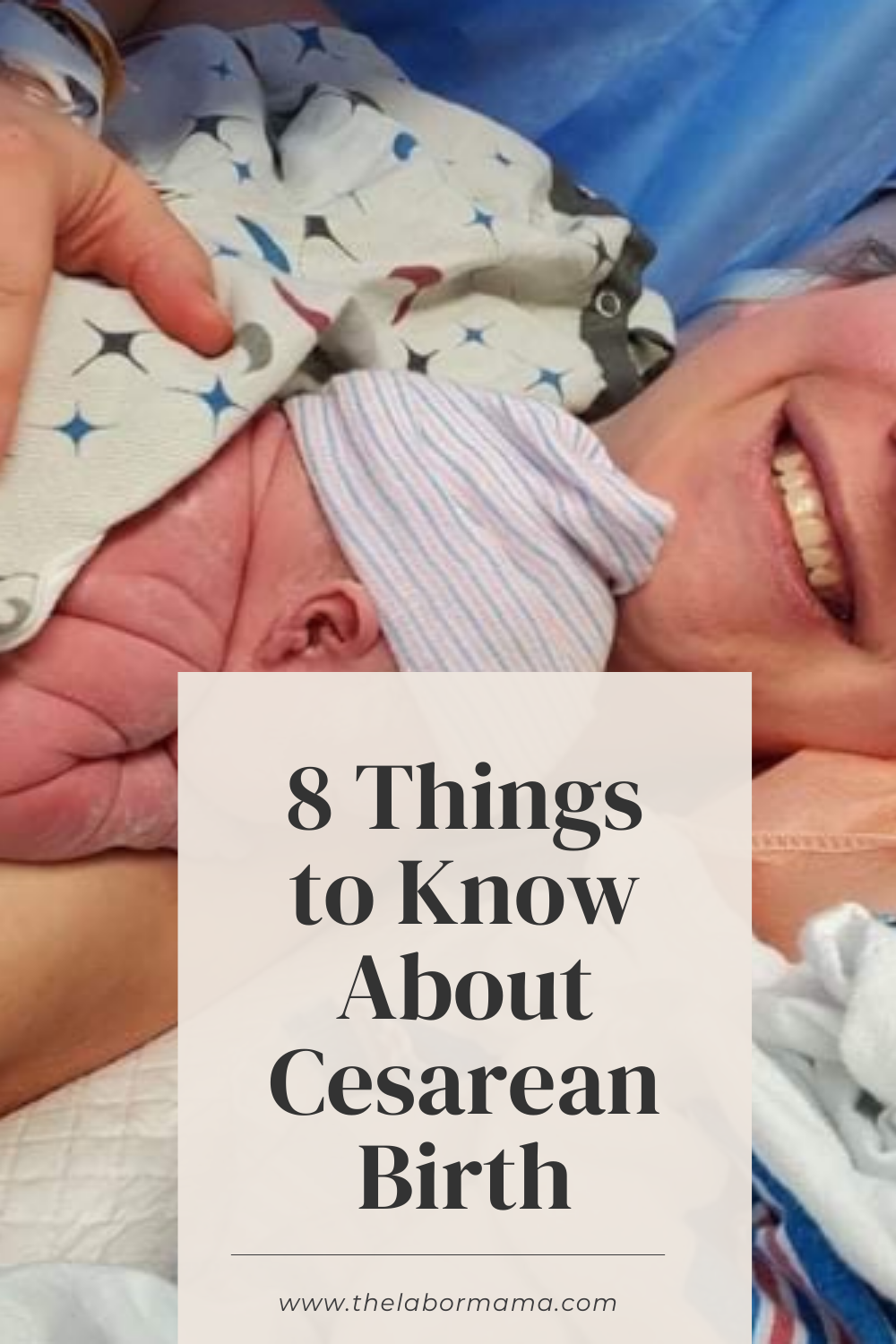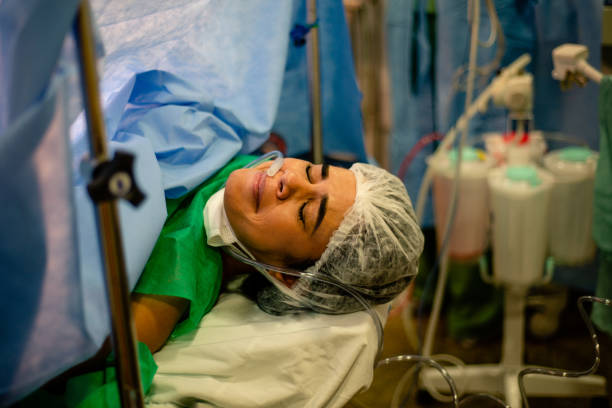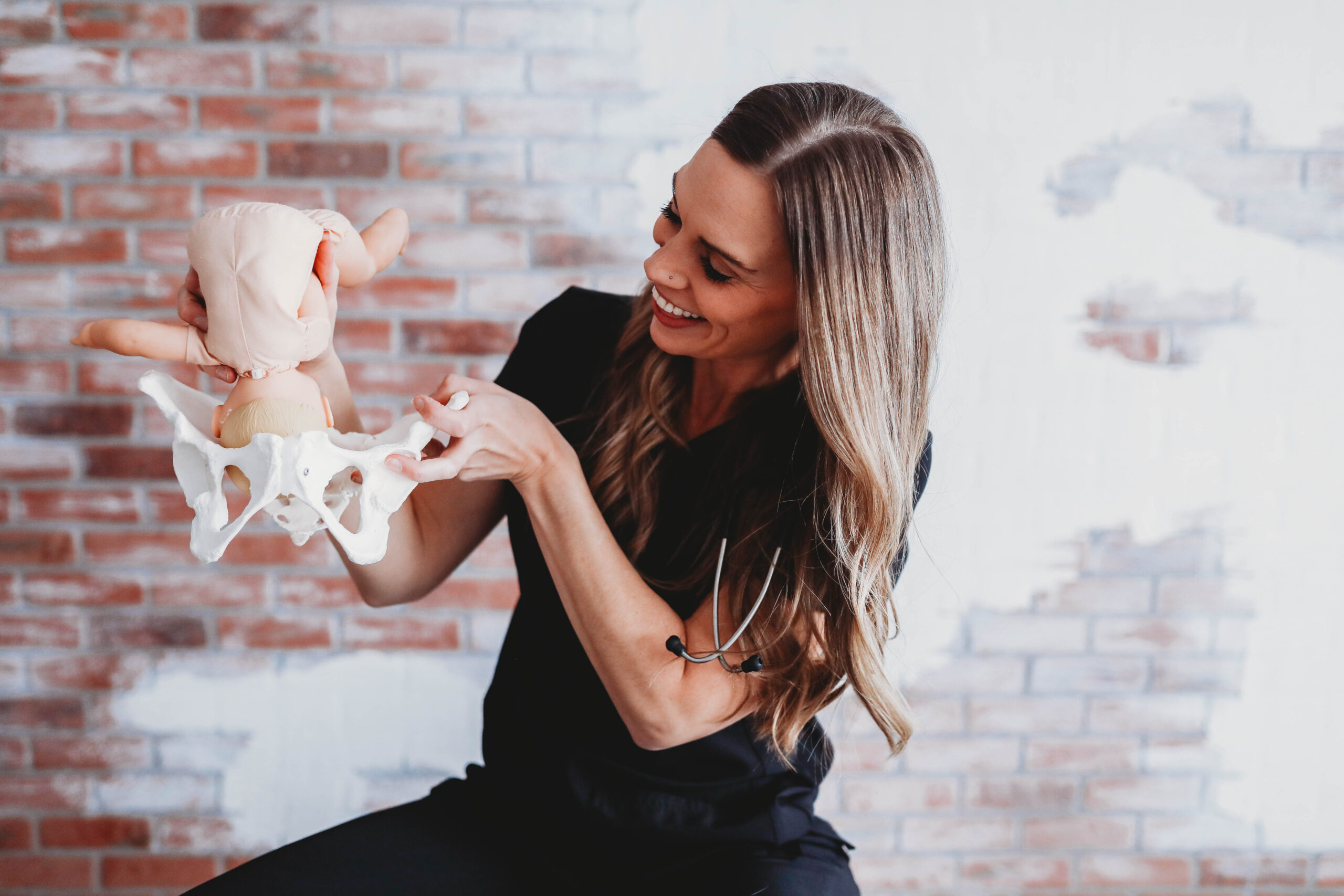Have you ever really stopped and considered what things you know about cesarean birth? A cesarean birth, also commonly known as a C-section, is birth by way of surgery. It is a valid and important way to safely bring a baby into the world (even if it wasn’t what you pictured for your delivery experience at first). And before we go any farther, if I can offer one piece of advice, it is that you don’t you ever let anyone tell you any differently!
The other thing I would love for you to hear is that you still have a say even if you’re giving birth by C-section. Your voice matters! And in most scenarios, I think you have a BIG say. So let’s dive into some of the particulars and the “things to know” that can help you prep for this cesarean coming up.

Who is The Labor Mama and Why Am I Here?
Hey friend! I’m Lo – also known around here and social media as The Labor Mama. I’ve spent my nursing career in labor, delivery, and postpartum, have birthed 3 of my own babies, have labored thousands of mamas at the bedside, have taught hundreds of students online, and have even delivered a few speedy little babies with my bare hands (oops).
Here at TLM, I offer online birth classes to empower you the way everyone should be. The education + support I offer gives you experience, evidence, and empathy; you’re getting all of my years of “clinical” RN knowledge, beautifully combined with my real experiences as a mama and a nurse. These are not your hospital birth classes (those won’t do it, I promise), and honestly, birth doesn’t follow a textbook or protocol anyway – you need to know so much more than that.
If you want to connect with me further, head to Instagram. There are hundreds of thousands of us over there learning together daily.
The Basics
Everyone has a different wish or idea for how they want birth to go. But if a cesarean section (also called a cesarean delivery or C-section) was never part of your plan, how do you handle suddenly needing one? I think that starts with understanding them.
You deserve to feel fully informed, whether you have a C-section planned or if your birth plan changes and moves towards an unplanned cesarean. In nearly every cesarean situation, you can decide things like who is in the room to support you, whether you want the surgery explained at each step, and sometimes even what music you want playing!
Those details I just mentioned are about something called a Gentle Cesarean. I’d encourage you to read up on that here!
What is a C-section?
A C-section is a surgery that takes baby from the womb, through incisions in your abdominal wall and uterus, when vaginal delivery is not possible or safe. This must be done in the hospital by an OB-GYN or a provider with surgical privileges (sometimes a family practice doc can do this). Though incredibly common today (about 30% of births in the US are via cesarean), this is still a major surgery, and it’s important to remember you’re still in charge of your body during it and that you have a lot to heal and recover from after it.
Why are C-sections sometimes needed?
C-sections may be planned, unplanned, or needed due to an emergency. You may need a C-section for a few reasons. Some of the most common reasons are:
- Breech presentation
When the baby is bottom or feet first instead of headfirst - Arrest of descent
When the baby’s head doesn’t go all the way into or won’t complete coming through the birth canal - Fetal distress
When a baby’s heart rate is too fast, too slow, or shows concerning patterns during labor or before labor - Previous C-section
VBAC (vaginal birth after C-section) is absolutely possible. However, a C-section is usually recommended if you have had two or more C-sections or have had other surgeries on the uterus. I have a mini birth course that deep dives the VBAC choice. If you’re considering a VBAC for you next birth, check out the details here! - Cord prolapse
When the umbilical cord (which gives baby nutrition and oxygen from the placenta) drops down into the vagina before the presenting part of the baby—either before delivery or during. This is an emergency and baby must be delivered right away! - Placental abruption
When the placenta (the organ that supports baby’s life inside the womb) separates from the uterine wall before birth - Placenta previa
When the placenta slightly or completely covers the cervix. As the cervix dilates (or becomes wider) during labor, this can lead to placental abruption (above) and dangerous bleeding. - Pregnant with multiples
Some twins can absolutely be born vaginally. This is especially true if the first twin is head down! For others, and for triplets or higher, a C-section may be recommended.
When should I question my provider about suggesting a C-section?
It’s always OK to ask your provider questions about the suggested plan of care. Always. You are in charge of your body and your pregnancy, and no one should be able to do anything without your consent. Make sure that your provider explains what’s going on to you and that you understand their reasons for recommending a C-section (or any other procedure, for that matter).
It’s also helpful to make a list of questions ahead of time (like before an upcoming prenatal appointment), if you can, so that you feel clear and confident should you need to make this decision.
Here are a few examples of questions to get you started:
- What is the main reason you suggest a C-section?
- What are the benefits and risks of having a C-section?
- What are my chances of having a successful vaginal birth or VBAC?
- What are your C-section rates?
- What are the hospital’s C-section rates?
- What gentle cesarean practices can I consider?
Would you like a birth plan template for your cesarean birth? It can be a great way to start learning your options and formulating questions to ask. You can get a copy of one right here.
8 things to know about a C-section birth
- Most C-sections take about 90 minutes total. This includes preparing, about 15 minutes of surgery to get to baby, and then stitching up after baby is out.
- You’ll probably be awake. It is very rare that you will be put to sleep, unless it’s an emergency.
- Want a peek? A plastic curtain will be put up above where the surgeons are working so you will not see the surgery taking place. You CAN ask for a clear curtain if you’d like to see a bit more of the action, but this can be difficult if your arms are strapped down (which is common for a C-section). You can ask not to be strapped down (and lots of other things too)! Snag your free birth plan to see those choices.
- You have choices. As I mentioned earlier, having a say goes a long way if you find out you have to have a C-section when you weren’t expecting it. Ask your doctor and hospital if you can have music playing, if your support person or partner can take pictures, and if you can have baby placed on your chest right away if there aren’t any respiratory issues with the baby. (More gentle cesarean options here).
- Cut to the chase. After the baby has been delivered, someone will cut the umbilical cord. They will also allow a partner or support person to do this if there aren’t any concerns with the baby at birth (usually after baby has been handed off to nursery staff). If you can, ask about this before surgery so there is a plan.
- Stitching up and skin-to-skin time. While the pediatricians and nursing staff are making sure that your baby is doing well, the surgeons will remove your placenta and stitch you up. Many hospitals will let you hold your baby during this so be sure to ask. Read more about the benefits of skin to skin here!
- Recovery room time. From the operating room, you will go to recovery, also called the post anesthesia care unit (PACU). If the baby is doing well, they’ll come with you. Your care team will watch your blood pressure, pulse, and pain levels. They will do this for 1-2 hours to make sure you are okay before you can go to your postpartum hospital room. If your baby is with your support person, they will be brought to you in recovery. If you want to breastfeed at this time, you totally can! You get to call the shots with this delivery, too, and I want that to always be front of mind for you.
- Speaking of recovery. After a C-section birth, you will stay in the hospital for 2-4 days to make sure that you are recovering well.
Tips for recovery after a cesarean birth
Recovering from a C-section takes time (around 6-8 weeks, or longer). Since it’s a big surgery, you’ll have some “do’s and don’ts” to follow, like:
DO:
- Move around with someone’s help when you feel comfortable
- Get someone to stay with you to help you when you’re home from the hospital if you live alone
- Expect to bleed postpartum. You have a wound where your placenta attached too, so you will have vaginal lochia!
- Take lots of breaks to rest
- Walk a little bit everyday (just around the house, your block, or anywhere without stair!) to help you recover
- Take your pain meds as needed. Don’t be a hero; it’s really hard to play “catch up” when you get behind on your pain management. Weaning off slowly and/or spreading out the times you take your medication is a better way to stop using your recommended meds.
- Keep the incision site clean and dry. Make sure you’re peeking at it daily; you may need a mirror or need to lift the extra fatty tissue that covers it. Call your doctor if you see swelling, redness, pus, or if the incision is separating
- See your doctor for a checkup 2-3 weeks after surgery, and again at 6 weeks. This is important to make sure your incision is healing.
- Read this letter from your nurse. It’ll give you lots of insight and alllll the feelings.
DON’T:
- Have sex before you’re given the OK from your doctor
- Lift anything heavier than your baby for the first 6-10 weeks after surgery. Your provider will clear you for heavier lifting at a follow up appointment.
- Take a bath that covers your surgery incision area; showers are great! Your provide can clear you for tub baths if or when you’re wanting one!
- Exercise until your provider says it is safe (stick to walking for now!)
- Driving is not recommended for at least the first 2 weeks after surgery
These lists are not all inclusive, so please make sure you pay attention to individualized advice your provider gives to you. Things are sometimes different based on your incision, if you labored before, why you needed a cesarean, etc.
Want a couple “stock up on cesarean supply” ideas? Check out this space.
Some final thoughts
Cesarean birth can be a beautiful way to bring your baby earth-side. And it can be a space where you can have lots of input and feel intimately involved in your birth too. When or if you meet your baby in this way, it’s also important to remember that it’s a major surgery and you’ll need a little extra help and recovery time. Give yourself lots of grace, ask for help, say “yes” to those who offer to do things for you, and take plenty (or as much as you can) of extra time to heal.
♥️ From me to you: I’ve written a letter to my cesarean mamas that I’d love for you to read too, you can find that right here.
Have you had a cesarean birth before or have one scheduled? Your questions are ALL good and valid, and I’d love to hear them (or your thoughts on this piece, too). Always here for you. xx, Lo

More resources (and freebies!) for you to take a peek at:




